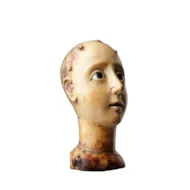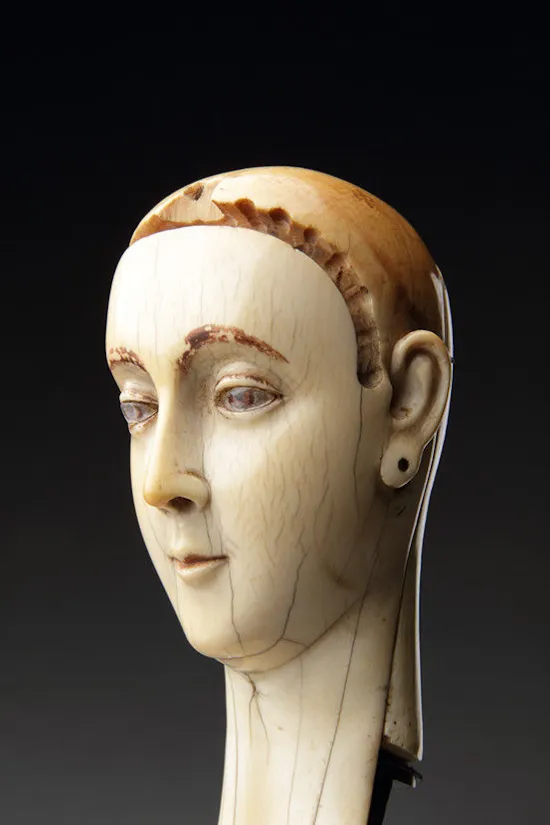Collection of Three Spanish Colonial Philippines Carved Ivory Heads
A Fine Collection of Three Spanish Colonial Philippines Carved Ivory Heads Depicting the Virgin Mary
The eyes of glass, fixings to the head for a wig or aurole of silver
18th Century
SIZES:a. 5.5cm high – 2¼ ins high / 11cm high – 4¼ ins high (including stand)
b. 9cm high, 3½ ins high / 15cm high – 6 ins high (including stand)
c. 13.5cm high – 5¼ ins high / 21.5cm high – 8½ ins high (including stand)
The eyes of glass, fixings to the head for a wig or aurole of silver
18th Century
SIZES:a. 5.5cm high – 2¼ ins high / 11cm high – 4¼ ins high (including stand)
b. 9cm high, 3½ ins high / 15cm high – 6 ins high (including stand)
c. 13.5cm high – 5¼ ins high / 21.5cm high – 8½ ins high (including stand)
The cathedral of Manila, the first in the islands, was erected in 1578 by Pope Gregory XIII under the invocation of the Immaculate Conception and thus in the Philippines the Virgin was often portrayed as a solitary figure without her child, the ‘Purisima’ or ‘Queen of Heaven’. For 350 years the Philippines were under Spanish colonial rule and the Cult of Mary, ‘Santa Maria’, was of great importance. Almost every other church was dedicated to one of her titles and images of her were therefore in great demand. Retables frequently had statues of the Virgin on the central or highest niche whilst household altars always had some representation of the Virgin standing beside a crucifix.
Wooden statues of the Madonna and of saints with ivory heads and other parts were also carved in Europe by artists such as Simon Troger in South Germany, but the carving of religious ivories in the Philippines developed from a mix of the cultures of Goa, India, China and colonial Spain and Portugal. Many of the figures were modelled after prints and 17th century religious oil paintings. The wooden bodies of the Santos and Virgin were clothed in rich luxurious garments often garnished with precious stones, and strips of gold and silver, and were perfumed for special feast days with scented oils. The smaller figures were kept for private devotion or encased in frames, whilst the larger ones were intended for processions on Good Friday or the town fiesta, where they embodied the piety and pride of the community.
Wooden statues of the Madonna and of saints with ivory heads and other parts were also carved in Europe by artists such as Simon Troger in South Germany, but the carving of religious ivories in the Philippines developed from a mix of the cultures of Goa, India, China and colonial Spain and Portugal. Many of the figures were modelled after prints and 17th century religious oil paintings. The wooden bodies of the Santos and Virgin were clothed in rich luxurious garments often garnished with precious stones, and strips of gold and silver, and were perfumed for special feast days with scented oils. The smaller figures were kept for private devotion or encased in frames, whilst the larger ones were intended for processions on Good Friday or the town fiesta, where they embodied the piety and pride of the community.
A - Now SOLD
B - Available - now sold
C - Available - now sold
Similar heads required for stock - please contact with details
B - Available - now sold
C - Available - now sold
Similar heads required for stock - please contact with details
Collection of Three Spanish Colonial Philippines Carved Ivory Heads

SOLD






















































